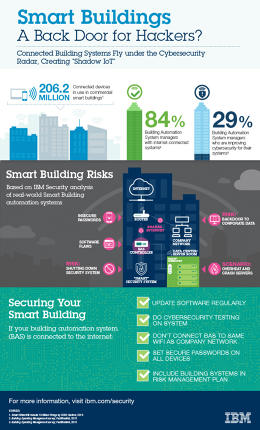Though headlines about bitcoin this year have focused on the challenges facing the cryptocurrency, it's still booming with some of the highest mining and transaction rates in its history, according to recent statistics.
The digital currency has yet to find the "killer app" that would make it an essential part of the average consumer's Internet toolkit. Several bitcoin-related services shut down in recent months, some amid allegations of fraud, which only highlighted the continued risks that deals tied to the currency can pose for casual investors. As a result, some companies are building alternative networks based on the technology behind bitcoin.
But the bitcoin network's hash rate—a measurement of the amount of computing power being devoted to mining the currency—reached an all-time high this month, and the week ending Tuesday saw the most bitcoin transactions of any seven-day period since bitcoin's inception, according to statistics from the bitcoin data service Kaiko.
Each of those transactions is automatically disseminated to the global bitcoin network and recorded by bitcoin miners to a shared transaction ledger known as the blockchain. Miners use specialized, high-powered servers to group new transactions into sets called blocks that meet certain mathematical specifications when looked at in combination with blocks that have previously been formed.
For that, they're rewarded with newly created bitcoin, plus small transaction fees, for each mathematically valid block added to the transaction chain. In order to keep new bitcoin flowing at a steady rate, the network automatically adjusts the range of values of a mathematical hash function that valid blocks can produce as the amount of computing power devoted to mining increases or decreases.
At present, the global network of miners computes about 700 quadrillion hashes, or 700 petahashes, per second. Valery Vavilov, the CEO of bitcoin mining technology company BitFury, predicted in an email to Fast Company the network will soon enter the "exahash era," computing more than one quintillion hashes every second, thanks in part to new speedier mining chips it's set to release early next year.
While BitFury conducts its own mining operations on a grand scale—the company just opened a massive new data center in Tbilisi, Georgia, last week that Vavilov says will on its own ultimately transform 40 megawatts of power into between 400 and 650 petahash—it also offers its chips for sale to other miners. For while controlling more mining capacity generally means more blocks added to the chain and more bitcoin revenue, the bitcoin community is inherently fearful of any one organization controlling more than half of the world's mining capacity.
"As a responsible player in the Bitcoin community, we will be working with integration partners and resellers to make our unique technology widely available ensuring that the network remains decentralized and we move into the exahash era together," Vavilov said in a recent statement.
Having any one company controlling the majority of mining capacity would give it too much power to manipulate which transactions get recorded to the permanent chain and in which order and could trigger a bitcoin sell-off if users come to distrust the currency.
At present, bitcoin's trading roughly 35% higher against the dollar than at this point last year, at roughly $435 per bitcoin, though that's still far from its peak just over two years ago, when it briefly traded for more than $1,200 per coin. The currency fell from those highs after the collapse of troubled Tokyo-based bitcoin exchange Mt. Gox.
And while this year bitcoin became easier than ever to buy and sell, thanks to an expanding network of bitcoin ATMs, bitcoin exchanges, and peer-to-peer trades through services like the classified advertising site LocalBitcoins, the currency's backers have yet to find a way to make it indispensable to the average Internet user.
The past year also saw the collapse of a number of bitcoin-related businesses, from mining companies affected by the currency's decline in value to consumer-facing businesses that failed to gain traction.
The bitcoin mining pool BTC Guild, which enabled miners to share the risks and rewards of mining the digital currency, shut down this summer citing increased competition and regulatory uncertainty. Dutch firm Mining ASICS Technology declared bankruptcy in January after being unable to deliver pre-ordered mining hardware, according to bitcoin news service CoinDesk. Connecticut-based mining company GAW Miners fell into disarray amid controversy over its own bitcoin alternative, called PayCoin, and a lawsuit by the Securities and Exchange Commission alleging it fraudulently oversold stakes in its Hashlets mining operation.
"There was no computer equipment to back up the vast majority of Hashlets that defendants sold," the SEC alleges.
On the consumer side, bitcoin-based crowdfunding site Swarm shut down amid disputes between its founders and a lack of funds, according to news service CoinTelegraph. Bitcoin exchanges Yacuna, Harborly, and Vault of Satoshi , each of which allowed customers to trade bitcoin for conventional currency, all also ceased operations in 2015, according to CoinDesk.
In the meantime, a wide variety of financial and tech companies have begun to look seriously at harnessing the underlying blockchain technology—and, in some cases, even the bitcoin network itself—for recording other types of financial transactions.
"Advancement in distributed ledgers can provide tremendous evolutionary opportunities in financial services, and drive new opportunities and efficiencies in institutional investing," said Antoine Shagoury, global chief information officer at State Street, in a recent statement.
State Street joined banks like JPMorgan and Wells Fargo, along with tech companies like IBM and Intel, last week in announcing a joint effort to pursue open source enterprise blockchain technology, managed through the nonprofit Linux Foundation.
The companies are betting that the same basic data structures that enable bitcoin users to track how that digital currency is transferred can also be used to track ownership of more traditional assets. Similar cryptographically secure hash functions can ensure shared ledgers stay tamper-proof, and the standardized block formats can take some of the pain out of transactions that now require updating differently formatted databases across multiple institutions.
"Distributed ledger technology will unlock the full 'digital' potential of capital markets and the wider financial services industry by enabling a shift away from the current reconciliation based systems that are very expensive and highly inefficient," said David Treat, the managing director of financial services at Accenture, in a statement announcing the company's participation.
And Overstock.com, which experimented with the sale of special bonds whose ownership was recorded on the actual bitcoin blockchain earlier this year, announced this month that it obtained approval from the Securities and Exchange Commission to offer additional securities transferred through that same shared ledger.
"Unless otherwise described in the applicable prospectus supplement, transactions in our digital securities on the [new trading system] will utilize the Bitcoin blockchain as the relevant distributed ledger, thereby capitalizing on Bitcoin's established algorithm-based consensus approach to validating ownership records," the company said in a November SEC filing.
Get the latest Fast Company stories in your inbox daily
');
window.ga('send', 'event', 'User' , 'Interaction' , this.key + ':ArticleView:newsletter:fail');
window.ga('rollup.send', 'event', 'User' , 'Interaction' , this.key + ':ArticleView:newsletter:fail');
if (index === data.response.errors.length - 1 ) {
var successfulSubscribes = newsletters.diff(failedSubscribes);
$(successfulSubscribes).each(function(index) {
$form.parent('div').prepend('
Thank you! Please check your inbox to confirm you subscription to '+ (this.charAt(0).toUpperCase() + this.slice(1)).replace('Fastcompany', 'Fast Company')+ '!
');
window.ga('send', 'event', 'User' , 'Interaction' , this + ':ArticleView:newsletter:success');
window.ga('rollup.send', 'event', 'User' , 'Interaction' , this +':ArticleView:newsletter:success');
});
}
});
} else {
$form.parent('div').html('
Thank you! Please check your inbox to confirm!
');
$form.parent('div').removeClass('error');
window.ga('send', 'event', 'User' , 'Interaction' , 'fastcompany:ArticleView:newsletter:success');
window.ga('rollup.send', 'event', 'User' , 'Interaction' , 'fastcompany:ArticleView:newsletter:success');
window.ga('send', 'event', 'User' , 'Interaction' , 'events:ArticleView:newsletter:success');
window.ga('rollup.send', 'event', 'User' , 'Interaction' , 'events:ArticleView:newsletter:success');
}
};
function _formFail ($form, error) {
if (!$form) {
return;
}
console.warn('error: ', error);
// Use message from server response
var message = JSON.parse(error.responseText);
if (message.response && message.response.message) {
message = message.response.message;
// Error message not provided
} else {
message = 'Please enter a valid email address.';
}
var $parent = $form.parent('div');
// Remove other errors first
var $errors = $parent.find('.alert-box');
if ($errors) {
$errors.fadeOut(300, function() {
$(this).remove();
});
}
if (message && (message.code === -100)||(message.code === 220)) {
message = 'Please enter a valid email address.';
}
// Append new errors
$form.parent('div').prepend('
' + message + '
');
$form.find('input').prop('disabled', false);
};
});
})



